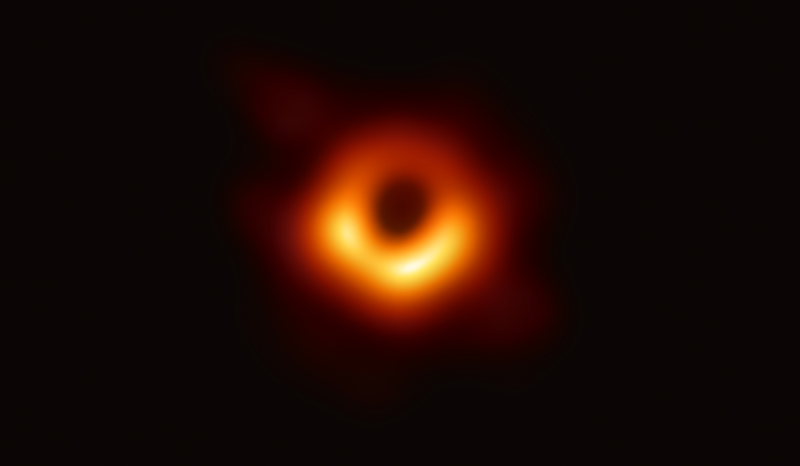
New Technique Discovered For Easy Autism Detection in Kids
A new study has discovered a new technique that ensures autism spectrum disorder in kids is accurately and quickly detected by doctors. Previously discovered

Today astronomers from the Event Horizon Telescope Project (EHTP) unveiled the first-ever picture of a black hole and I’m sure most of you will have seen or heard of it by now. But what most places are failing to underline is how this little blurry picture is one of the most significant breakthroughs in physics in most of our lifetimes. This article will answer that for you.
Six simultaneous conferences occurred around the world today and revealed this picture at the same time. This marks a great moment in a project that spans the globe and a true showing of what international co-operation can achieve. The European research commissioner Carlos Moedas said at the conference in Brussels today that the history of science will be divided into “the time before this image” and “the time after this image”.
Firstly, let’s answer this question. A black hole is a region of space that exerts such a strong gravitational pull that nothing… not even light can escape its grasp. This is what of course gives them their name and makes them exceptionally difficult to photograph since it doesn’t reflect or emit light. They form when a very large star dies, and the mass of the star collapses into a space a fraction of the size.
Over 100 years ago Einstein predicted the existence of such phenomena in the universe and how the sheer force of gravity present warps the spacetime around them. In the center of a black hole is what is known as a singularity, this is where we reach the unknown in physics and we don’t really know what happens. The outer edge of the black hole is known as the event horizon, this is the point of no return and if any matter passes this point it will be unable to escape the gravitational pull of the black hole.
As previously mentioned, black holes consume everything, even light, so how did they take a photo of it? In April 2017 the EHTP realized that instead, they could focus on the event horizon and map together the pictures taken. There was one problem with this, however: the black hole is 55 billion light-years away, so you’d need a telescope the size of the Earth to capture a photo of it… so that’s what they did.
By using several telescopes at strategic positions around the globe they formed a parabolic radio telescope the size of the Earth and were able to take a picture of the event horizon and the “shadow” of the black hole Messier 87 (M87), in the center of a galaxy in the Virgo constellation.
When matter passes the event horizon it is predicted that this matter starts to spin very quickly, so quickly that it gets very hot and emits light in the form of radio waves. It was this form of electromagnetic radiation that the EHTP caught with their telescopes to produce the image that we see at the top of the page. Since the four-day observation period in 2017, the data has been analyzed, rendered, and mapped together to form the image we see.
You might be wondering why this is of any significance at all, and that is a fair enough question. Besides the fact we are seeing images of somewhere that humanity has never seen before and some people never thought we would be able to see, black holes are very problematic for scientists due to their properties. They are very far away, have extreme gravitational forces, suck up all light, and until now have been mostly theoretical. The first thing you need to do when you want to experiment proves that something exists, in this case, that event horizons exist, and this picture has done exactly that. More than this it matches incredibly well with the theory-based simulations that were created in the last 6 months.
Professor Izola from Geothe University in Frankfurt had this to say: “We have transformed a mathematical concept, that of the event horizon, … into a physical object. Something that we can test, and we can measure, and we can observe repeatedly”. This is the foundation of the scientific method.
We learned a few things from this picture: over the observation period the ring around M87 stayed the same, the size of the black hole stayed the same (we now know it is 100 billion kilometers in diameter) and the contrast between the shadow and the outer ring was consistent. You will notice that the ring is much brighter on the bottom half of the black hole. This can only be formed when something at the source is rotating, giving rise to three possibilities: the black hole is spinning in a clockwise direction, matter inside the black hole is spinning in a clockwise direction, or both.
We have also learned, importantly I will add, that black holes behave very similar to how we predicted they would, this means that we can start inputting real data into our simulations and expect that the results may not be too far from reality.
This picture and the fact that it is possible to take it elevates the study of gravity up to the next level and pushes humanity into a new era of being able to experiment with the next frontier of the universe. With this being completed in the future the EHTP is aiming to investigate the behavior of black holes and to be able to produce movies rather than static images. M87 is also famous for the huge relativistic jets that it emits, they are hoping they will be able to study this phenomenon and see how they emit from the black hole.
Truly, it is impossible to say ahead of time the real effects this achievement will have on the world, in 50 years’ time we don’t know what research will have been conducted, what discoveries will have been made, and indeed what we will find in black holes. The European conference ended with a quote by professor Stephen Hawking that is very much fitting: “It is said that fact is sometimes stranger than fiction, and nowhere is this more true than in the case of black holes. Black holes are stranger than anything dreamt up by science fiction writers, but they are firmly matters of science”.

A new study has discovered a new technique that ensures autism spectrum disorder in kids is accurately and quickly detected by doctors. Previously discovered

New Study shows that different coloration of primates doesn’t indicate fertile phases, but individual characteristics and reproductive status. Previous studies of ornamentation in female primates

A new study reveals that acute kidney failure can be detected earlier than the previous and currently used methods in patients. Drug-induced acute kidney

Scientists have discovered a new anticancer drug; pancreatic and ovarian cancer rarely show early symptoms and are known as silent killers. Other studies have






DISCLAIMER: ConductScience and affiliate products are NOT designed for human consumption, testing, or clinical utilization. They are designed for pre-clinical utilization only. Customers purchasing apparatus for the purposes of scientific research or veterinary care affirm adherence to applicable regulatory bodies for the country in which their research or care is conducted.